Disclosure: This article contains affiliate links. We may earn a commission from purchases at no extra cost to you, which helps our travel content.
Standing upon the windswept plains of northwestern Turkey, where the Aegean breeze carries whispers of bygone civilizations, I found myself contemplating the profound paradox of Troy—a site simultaneously immortalized in literature yet physically buried under millennia of dust and debate. This legendary city, known to the Hittites as Wilusa and the Greeks as Ilion, represents not merely a single archaeological site but rather a palimpsest of human habitation spanning over 4,000 years and at least ten distinct settlement layers. What began as my scholarly curiosity about Homeric architecture evolved into a week-long immersion into one of archaeology's most contentious treasures.
Navigating the Layers of Troy: A Practical Approach
Arriving at Troy (Turkish: Truva) requires some preparation, both intellectual and logistical. The archaeological site lies approximately 30 kilometers southwest of Çanakkale, making this charming harbor town the ideal base for exploration. I opted to stay four nights at a modest pension in Çanakkale's old quarter, allowing ample time for multiple visits to Troy and excursions to related sites.
The site itself presents an interpretive challenge even for experienced travelers. Unlike more visually striking ancient cities like Ephesus, Troy demands contextual understanding to appreciate its significance. Before my visit, I immersed myself in scholarship using my digital tablet loaded with archaeological journals and historical texts—far more practical than carrying multiple reference books.
I recommend allocating at least two separate visits to Troy: one with a knowledgeable guide to establish chronological and spatial orientation, followed by a solo exploration where you can contemplate specific features at leisure. The Turkish government has invested considerably in improving visitor infrastructure, including elevated walkways that protect the ruins while providing excellent vantage points for photography.

💡 Pro Tips
- Visit early morning (before 10am) or late afternoon (after 3pm) to avoid both tour groups and the harsh midday sun
- The small on-site museum provides essential context but can be thoroughly explored in under an hour
- Wear sturdy walking shoes with ankle support—the terrain is uneven and sometimes slippery on limestone surfaces
The Trojan War: Mythology Meets Archaeology
The question inevitably arises: did the Trojan War actually occur? The intellectual tension between Homer's epic narrative and archaeological evidence creates a fascinating discourse that has captivated scholars for centuries. Heinrich Schliemann's controversial excavations beginning in 1870 were driven by his unwavering belief in Homer's literal truth, while modern archaeologists approach the site with more nuanced methodologies.
While wandering through the remnants of Troy VI and VIIa (the layers most commonly associated with Homer's Troy), I found myself contemplating the material evidence: defensive walls capable of withstanding significant siege, fire damage potentially indicating violent conflict, and Mycenaean pottery suggesting Greek presence. Yet the archaeological record remains stubbornly ambiguous about any specific conflict matching Homer's detailed account.
Perhaps most illuminating was my conversation with Dr. Ayşe Yılmaz, a Turkish archaeologist who has worked at the site for over a decade. 'Troy exists in two realms,' she explained as we examined the massive defensive walls, 'the physical city beneath our feet and the cultural Troy that lives in our collective imagination. Both are equally real and significant.'
To truly appreciate this duality, I recommend carrying a quality field guide alongside a good translation of the Iliad. Reading relevant passages while physically present at the corresponding locations creates a powerful cognitive resonance between literature and landscape.
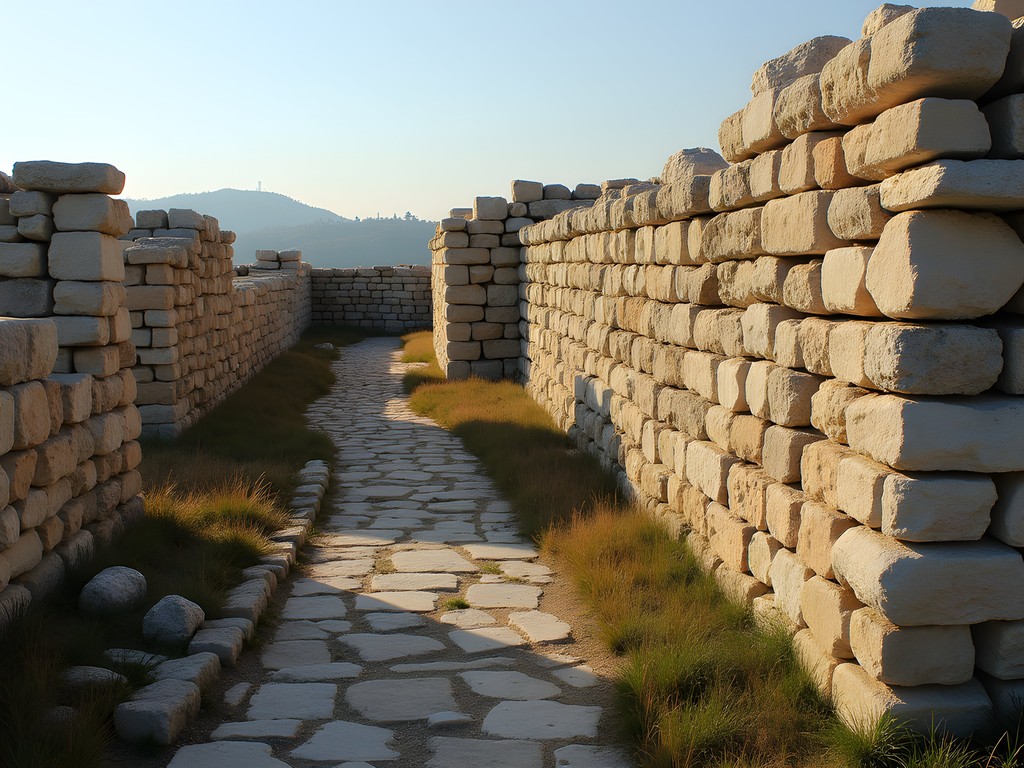
💡 Pro Tips
- Focus particularly on the defensive walls and gate system of Troy VI, which align most closely with Homer's descriptions
- The so-called 'Schliemann's Trench' demonstrates how early archaeological methods damaged contextual understanding
- Visit the replica Trojan Horse at sunset for atmospheric photographs, despite its obvious tourist appeal
Beyond the Citadel: The Lower City and Regional Context
A common misconception perpetuated by popular media is that Troy consisted solely of its citadel—the fortified hilltop area that forms the primary archaeological park today. Contemporary research has revealed a much more extensive settlement, with a substantial lower city extending beyond the famous walls and a complex regional relationship with surrounding territories.
During my third day of exploration, I ventured beyond the traditional tourist circuit to examine the less-visited eastern excavations, where recent Turkish-German archaeological teams have uncovered extensive evidence of the lower city. These findings suggest Troy at its height (particularly during the Late Bronze Age) was a substantial urban center of approximately 75-100 acres—considerably larger than the citadel alone.
To fully contextualize Troy, I recommend allocating time to explore the broader Troad region. I particularly valued my excursion to Alexandria Troas, approximately 30 kilometers south of Troy, which provides insight into the area's continued significance through the Hellenistic and Roman periods. For this regional exploration, I found having my own transportation invaluable and arranged a private driver through my accommodation in Çanakkale—more economical than renting a vehicle and navigating the sometimes challenging rural roads myself.
For capturing the expansive landscape contexts, my wide-angle lens proved essential, allowing me to document the relationship between archaeological features and their environmental setting—crucial for understanding Troy's strategic position near the Dardanelles.

💡 Pro Tips
- Request special permission at the site office to visit active excavation areas (granted selectively to those with genuine academic interest)
- The view from Çıplak Tepe (approximately 2km southeast) offers the best perspective on Troy's strategic position controlling the plain
- Local village museums in Tevfikiye and Çıplak sometimes display artifacts not included in the main museum collection
Cultural Immersion: Connecting Past and Present
Archaeological sites risk becoming sterile intellectual exercises without engagement with the living cultural context. Throughout my week exploring Troy, I made concerted efforts to connect with local perspectives on this shared heritage. The village of Tevfikiye, which borders the archaeological site, has undergone a remarkable transformation in recent years through the 'Archaeovillage Project,' an initiative converting traditional houses into accommodations, workshops, and cultural spaces.
I spent an illuminating afternoon with Mehmet Bey, a septuagenarian who recounted childhood memories of playing among the ruins before UNESCO designation and increased protection measures. His perspective provided a poignant reminder that archaeological sites exist within living communities with their own valid relationships to these spaces.
The culinary traditions of the region offer another avenue for cultural connection. The Çanakkale area is known for its distinctive Aegean cuisine with notable influences from historical population exchanges with Greece. I particularly recommend the small family restaurant Troya Sofrası near the site entrance, where traditional dishes like keşkek (a wheat and meat stew with potential Bronze Age origins) and sarma (stuffed vine leaves) are prepared according to regional methods.
For a deeper understanding of local interpretations of Troy, I attended an evening lecture at the Çanakkale Onsekiz Mart University, where Turkish academics presented current research on Anatolian perspectives on Trojan identity. Many contemporary Turkish scholars emphasize Troy's Anatolian character rather than its Greek associations—a fascinating counterpoint to Western classical traditions.
To record these cultural encounters, I relied on my audio recorder for interviews (with permission) and my travel journal for daily reflections, creating a more nuanced record than photographs alone could provide.
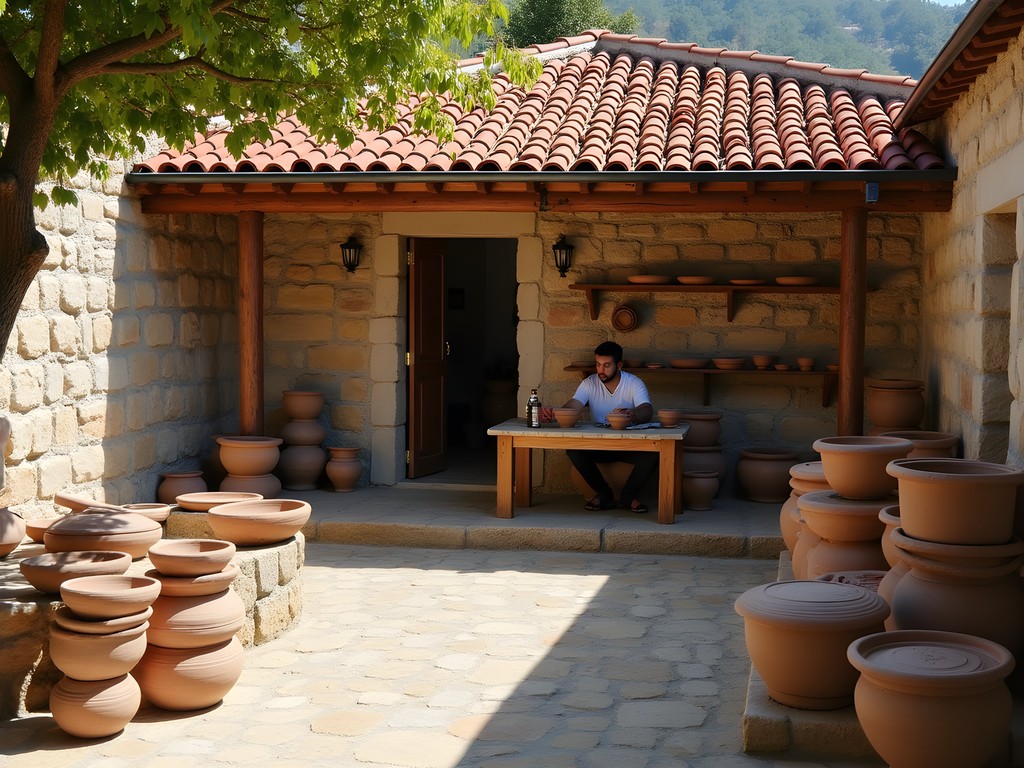
💡 Pro Tips
- Learn a few basic Turkish phrases—local appreciation for this effort often leads to more meaningful cultural exchanges
- The Çanakkale Archaeological Museum in town provides essential context for Troy within broader regional history
- Attend a traditional *sira gecesi* (traditional gathering with music and stories) if available during your visit for authentic cultural immersion
Preservation Challenges and Ethical Tourism
As both a student of historical architecture and an advocate for cultural preservation, I cannot discuss Troy without addressing the considerable conservation challenges facing the site. The very features that make Troy archaeologically significant—its multiple overlapping settlement layers spanning millennia—create unique preservation difficulties. Unlike sites with monumental stone architecture, Troy's mudbrick constructions and complex stratigraphy require specialized conservation approaches.
During my conversations with site conservators, I learned about ongoing efforts to balance accessibility with protection. Climate change poses particular threats, with increasingly erratic rainfall patterns accelerating erosion of exposed archaeological features. The Turkish government and UNESCO have implemented a comprehensive site management plan, though funding limitations remain a persistent concern.
As visitors, we bear responsibility for practicing ethical tourism that contributes positively to preservation efforts. This includes respecting barriers and restricted areas, however tempting it might be to venture closer to certain features. I observed several visitors attempting to collect 'souvenirs' from the site—a practice that constitutes looting regardless of the perceived insignificance of the item.
For those wishing to support conservation efforts more directly, the Friends of Troy Foundation accepts donations that fund specific preservation projects. Additionally, purchasing publications and materials from official site shops ensures revenue contributes to ongoing research and maintenance.
To minimize my environmental impact while still documenting the site thoroughly, I relied on my compact binoculars for observing distant architectural details without leaving designated paths. This approach allowed detailed examination while respecting physical boundaries established for site protection.
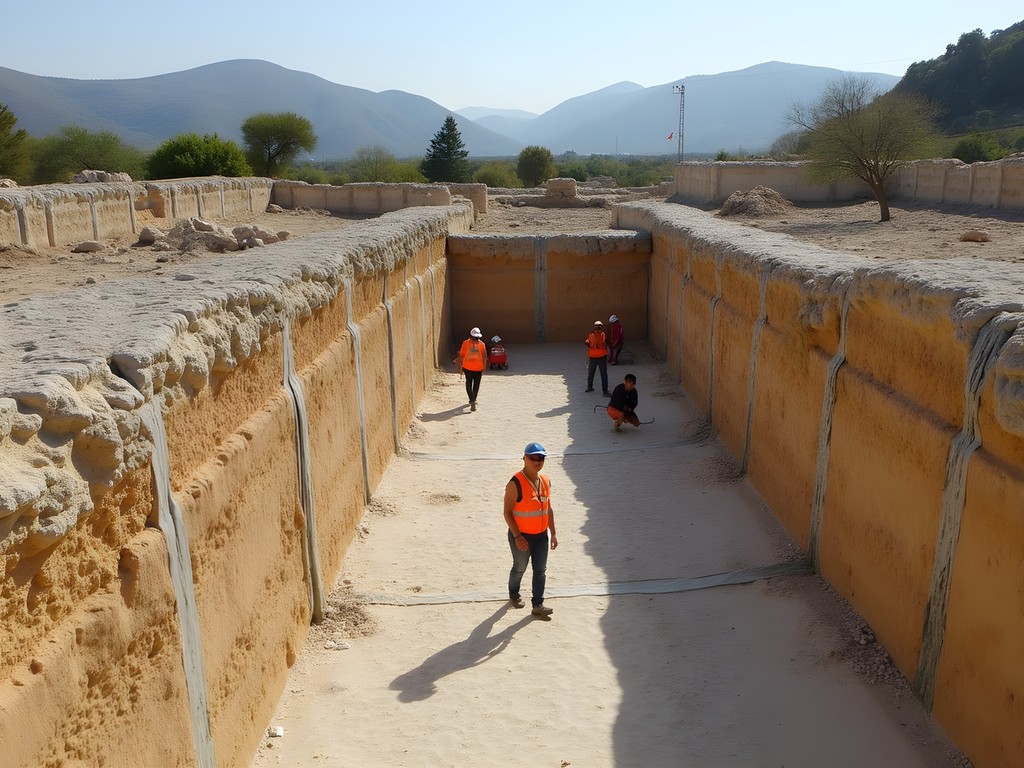
💡 Pro Tips
- Purchase the comprehensive site guidebook from the official museum shop rather than unauthorized vendors outside
- Report any observed damage or inappropriate visitor behavior to site guards
- Consider visiting during shoulder seasons (April-May or September-October) to reduce impact of overtourism during peak summer months
Final Thoughts
As I departed Troy on my final morning, watching the early light illuminate the ancient citadel walls, I reflected on the peculiar power of this place—a site that exists simultaneously as physical reality and cultural metaphor. Troy's significance transcends its modest architectural remains; it functions as a nexus where archaeology, literature, mythology, and modern identity politics converge in fascinating dialogue.
For the culturally curious traveler, Troy offers far more than a cursory stop on the well-trodden western Turkey tourist circuit. It rewards those willing to engage deeply, to visit repeatedly, and to contemplate the layers of meaning alongside the physical strata of occupation. My week exploring this legendary landscape reinforced my conviction that understanding historical sites requires both rigorous intellectual engagement and emotional openness to their continuing resonance.
As you plan your own journey to Troy, I encourage you to approach it not merely as a checklist destination but as a complex cultural landscape deserving thoughtful exploration. Allow yourself the luxury of time—to observe how the quality of light changes the appearance of the ancient stones, to contemplate the countless human stories embedded in these walls, and to form your own relationship with one of humanity's most enduring cultural touchstones. In doing so, you become part of Troy's continuing story—a narrative that has captivated human imagination for over three millennia and shows no signs of relinquishing its hold.
✨ Key Takeaways
- Allocate at least two separate visits to Troy to fully appreciate its complexity and historical significance
- Engage with both archaeological evidence and literary traditions to develop a nuanced understanding of the site
- Explore beyond the main citadel to understand Troy's regional importance and extensive lower city
- Connect with local communities and contemporary Turkish perspectives on Trojan heritage
- Practice ethical tourism that contributes positively to preservation efforts
📋 Practical Information
Best Time to Visit
April-May or September-October for mild weather and fewer crowds
Budget Estimate
$75-125 per day including accommodations, transportation, meals, and site fees
Recommended Duration
3-5 days including regional context
Difficulty Level
Moderate - Requires Significant Walking On Uneven Terrain And Intellectual Engagement

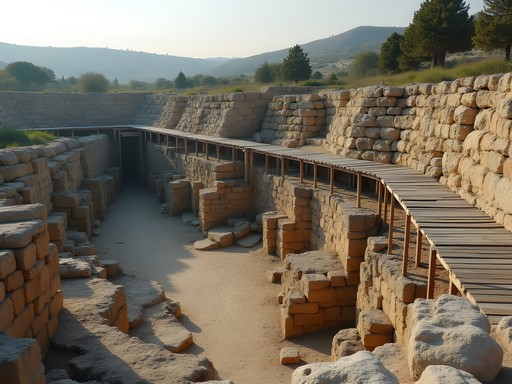
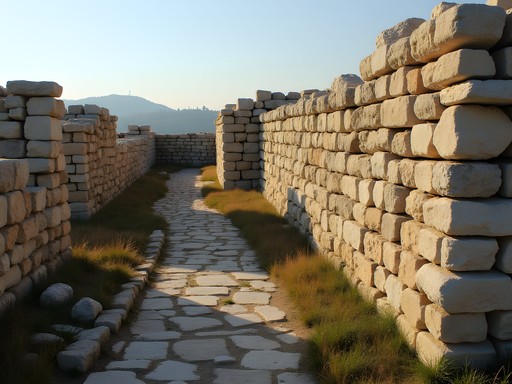
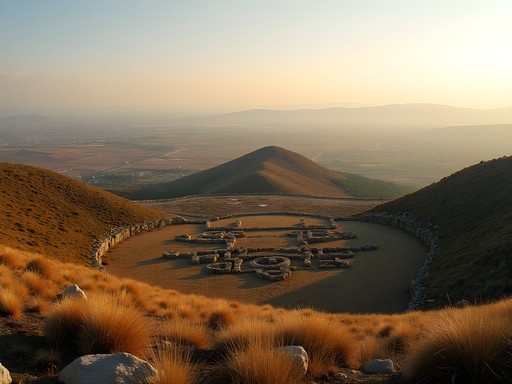

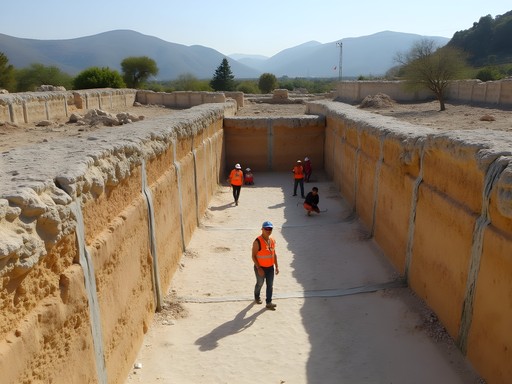


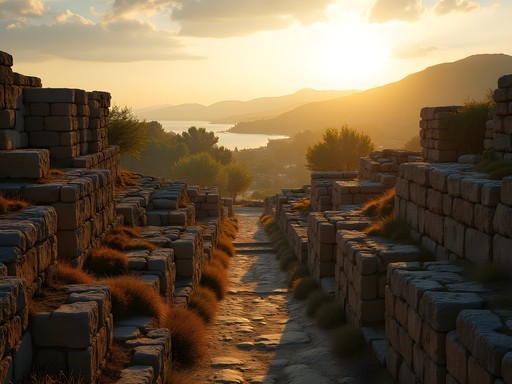







Comments
Megan Martin
Aria, this is such a comprehensive guide! I visited Troy last year during a business trip to Istanbul and made a side excursion. I'd add that hiring a local guide is absolutely worth it - the layers of history are so complex that having someone explain what you're looking at makes a huge difference. I'd also recommend visitors bring a good hat and water bottle as there's very little shade on site. The museum nearby is excellent too and often overlooked. I spent about 4 hours total at the archaeological site and wish I'd had more time. Did you find the reconstructed wooden horse to be a bit touristy or did it add to the experience?
history_buff_22
How did you get from Istanbul to Troy? Was it easy to arrange transportation?
Megan Martin
I took a bus from Istanbul to Çanakkale (about 5 hours), stayed overnight, then hired a driver the next day to take me to Troy. You can also join day tours from Çanakkale if you prefer. The site is about 30 minutes from town. I used my travel guide to plan the logistics and it worked out perfectly!
cityway
Thanks for the transportation tips! Is spring a good time to visit or would you recommend another season?
Megan Martin
Spring is perfect! Comfortable temperatures and wildflowers everywhere. Just avoid summer if possible - it gets extremely hot with minimal shade.
cityway
This is amazing! I've always wanted to visit Troy since reading about the Trojan War in school. Your photos really bring the ruins to life!
Megan Martin
Same here! The mythology always fascinated me, but seeing how Aria connects it to the actual archaeology makes me want to go even more.
cityway
Right? I'm thinking of planning a trip for next spring. Have you been there before, Megan?
blueclimber
Just got back from Troy last week! Your section on the different archaeological layers was super helpful - made the whole site make much more sense.
happyway
Did you use a guide or just follow the signs?
blueclimber
Hired a guide at the entrance - worth every penny! He explained things the signs didn't cover and answered all our questions.
skywalker
I visited Troy last year and was initially disappointed by how little remains visible. But after reading the information panels and using my audio guide, I began to appreciate the significance. The layered history is mind-blowing when you realize you're standing where multiple civilizations built and rebuilt over thousands of years. Your section on 'Navigating the Layers' would have been super helpful before my visit! One tip: wear good walking shoes and bring water - there's very little shade and it gets HOT in summer.
moonlegend
Was it crowded when you visited? Trying to figure out the best time to go.
skywalker
I went in mid-September and it wasn't too bad. A few tour buses in the morning, but by afternoon it was pretty quiet. I'd avoid summer peak season if possible!
Robert Moreau
Aria, your post took me right back to my visit last spring! I was similarly struck by how the site balances mythology with archaeological reality. One thing I'd add for visitors - the museum in Çanakkale is absolutely worth visiting before or after seeing Troy itself. It houses many artifacts from the excavations and provides crucial context. I hired a local guide who had worked on the excavations for years, and his insights made the jumble of stone walls come alive with stories. Also, I found that visiting in late afternoon gave the best light for photography and fewer tour groups. Wonderful post that captures the essence of this enigmatic place!
skywalker
Robert, did you stay in Çanakkale? Any hotel recommendations?
Robert Moreau
I stayed at the Kolin Hotel - it's on the waterfront with great views of the Dardanelles. A bit pricey but worth it for the location and comfort after a long day of exploring. There are plenty of budget options in the old town too!
summerstar
That wooden horse replica is so much bigger than I expected! Great photos!
moonlegend
Great post! I've always been fascinated by Troy but wasn't sure if it was worth the trip. How long would you recommend staying there? Is it doable as a day trip from Istanbul?
Aria Dunn
Thanks for reading, moonlegend! I'd say Troy itself only needs about 3-4 hours to explore thoroughly, but it's quite far from Istanbul (about 5-6 hours drive). I'd recommend staying in Çanakkale overnight and combining Troy with Gallipoli for a 2-day trip from Istanbul. That's what made it worthwhile for me!
moonlegend
Thanks for the advice! Çanakkale + Gallipoli sounds like a perfect combo with Troy. Will definitely plan for that!
redgal
Bring water and a hat. It gets hot with little shade.
freepro
Good to know! Was planning to visit in June but maybe I'll push to April after reading these comments!
moonguy
I visited Troy three years ago and was initially underwhelmed until I realized I needed to use my imagination more. Your section about the layers really resonated with me - it's not just about what you see but understanding what you're looking at. One tip for future travelers: the site is much more impressive if you read up on Heinrich Schliemann's excavations beforehand. Also, don't miss Gallipoli while you're in the region - the WWI battlefields are just across the Dardanelles and provide another powerful historical layer to the area.
photoninja
Totally agree about Gallipoli! We did both sites in one trip and the contrast between ancient and modern history was really moving.
waveway
I'm planning to visit Turkey next spring but don't know much about ancient history. Would Troy still be interesting for someone like me or should I focus on other sites?
Gregory Boyd
Not the author, but as someone who's been to Troy twice - it's absolutely worth visiting even with limited historical knowledge. The site has excellent information panels, and the Troy Museum (opened in 2018) does a fantastic job of contextualizing everything. I'd recommend reading a brief summary of the Trojan War before going, and maybe carrying a pocket guide for quick reference. Combine it with a visit to Gallipoli if you can - the contrast between ancient and modern history in the same region is powerful.
waveway
Thanks Gregory! That's really helpful. I'll definitely add it to my itinerary and check out that guide.
Venture X
Premium card with 2X miles, $300 travel credit, Priority Pass